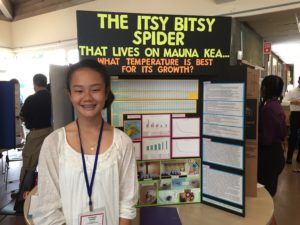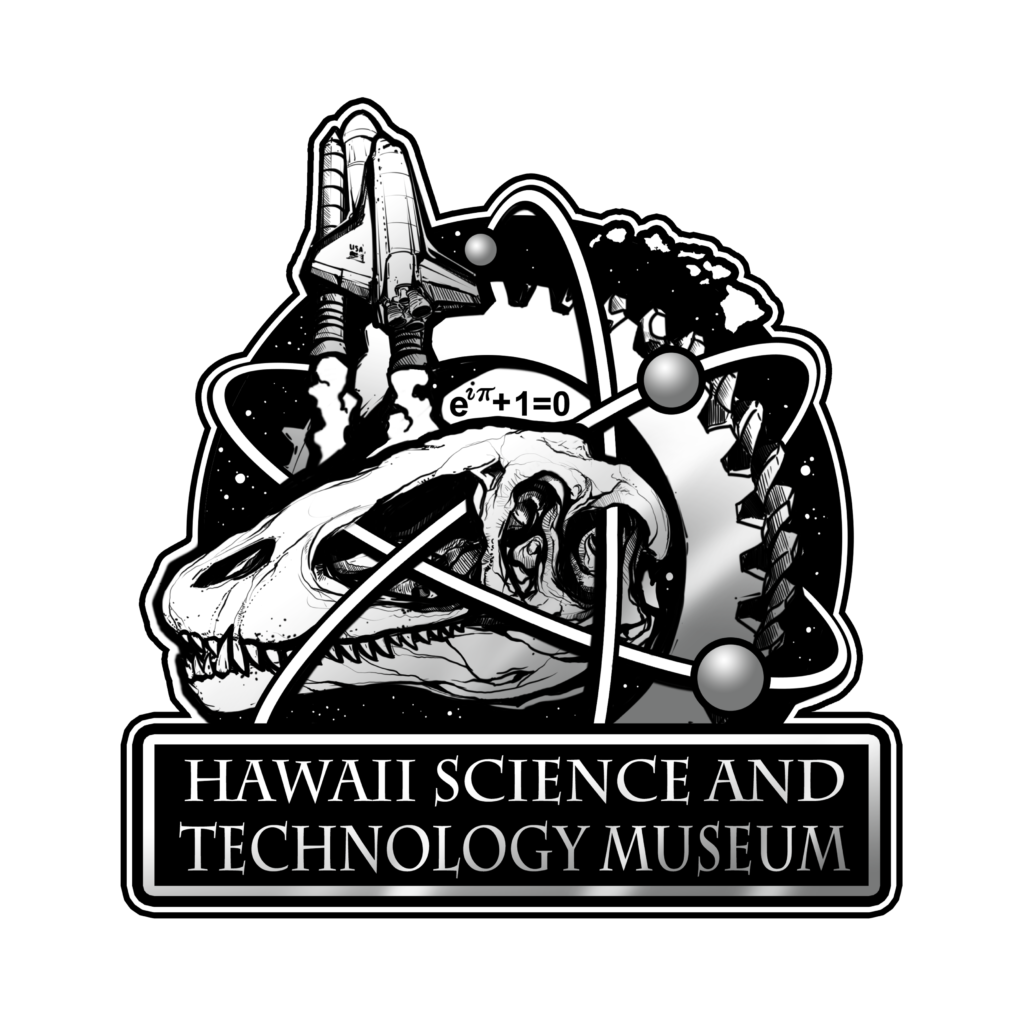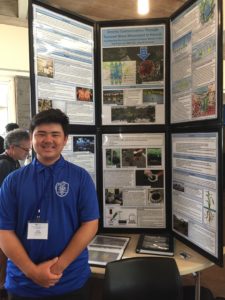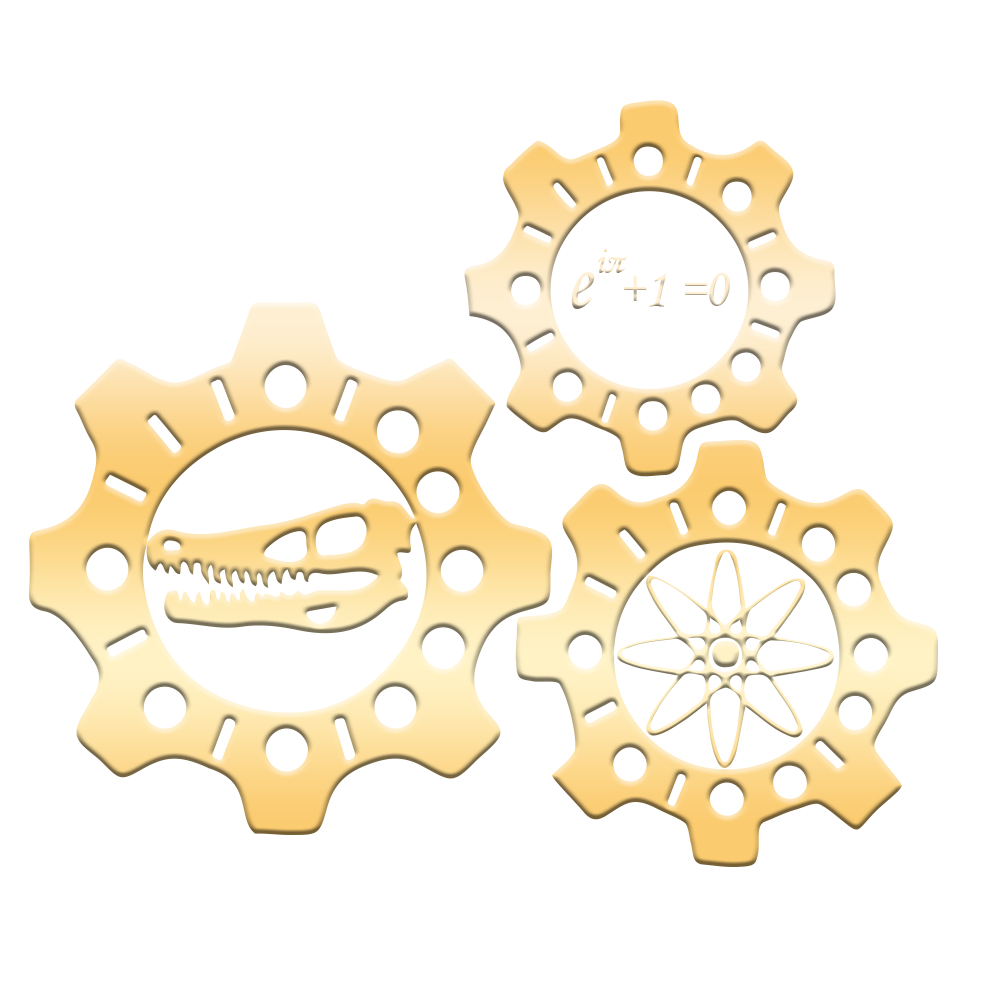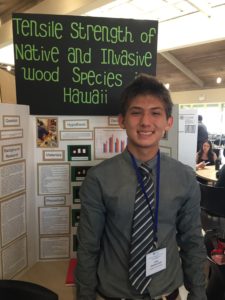

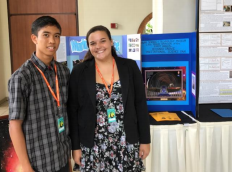
Student Research
HSTM sponsors various science fairs to give our young Hawaii Island scientists practice and experience to prepare them for district level competitions. Past winners have gone on to win numerous awards in state and national level competitions including The East Asia Observatory Research Award, the Yale Science and Engineering Association Inc. Award among many others. The Hawaii District Science and Engineering Fair, as an affiliate of the Hawaii Science and Technology Museum, supports student research developing our next generation of scientists and organizes opportunities for students to share their findings with the public. HSTM is developing electronics curriculum to be delivered in Hawaii schools using functioning CubeSat (miniature satellite) prototypes that students can use to do research, experiments, and weather data collection in coordination with other schools across the island utilizing COSMOS software developed by our partners at the Hawaii Space Flight Laboratory. These activities are a part of the HSTM Community Aerospace Program in partnership with Pacific International Space Center for Exploration Systems that seeks to bring more aerospace education to Hawaii Island students to help develop our STEM workforce. Activities include the HSTM CubeSat mission on Firefly Aerospace’s DREAM Payload scheduled for launch from Vandenberg Air Force Base in 2021, the Lava Tubes Rocketry Team, a group of students from various Hawaii schools working to compete in the American Rocketry Challenge, and the Rescue Raptors, an Unmanned Aerial Vehicle tactical response team that responds to local emergencies and disasters.
Opihi Spawning Cycles
Hawaii Science and Technology Museum also previously hosted the student research project, “Opihi Spawning Cycles”, conducted in partnership with the Hamakua Youth Center in Honoka’a Hawaii to determine the spawning cycles of opihi or, cellana, a genus of snails or limpets in the family Nacellidae that is an edible delicacy in Hawaii. The students used collected specimens and took measurements to determine whether or not they were actively spawning and then collected all the data to determine what times of the month the opihi are spawning in their community. Using this information students could then make recommendations to their community leaders about appropriate harvest times to enjoy opihi in a sustainable way. Please enjoy This You Tube Video to further explain this experiment.
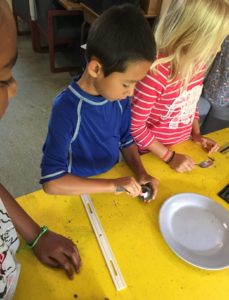
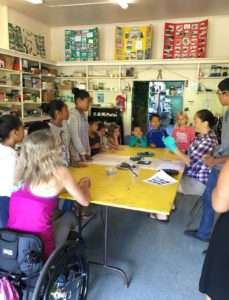
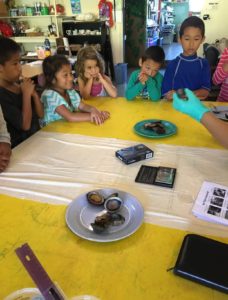
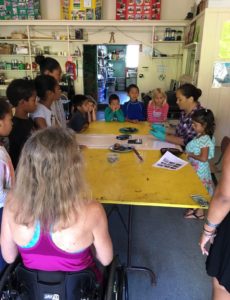
Students at the Hamakua Youth Center conducting opihi research. These photos have been used with permission of the Hamakua Youth Center.
Student Research
Hawaii Science and Technology Museum has been selected by Firefly Aerospace to launch our CubeSat “Hiapo” aboard their Alpha Launch Vehicle maiden voyage. This project has been a great success and has allowed our organization to explore the development of CubeSat technology and industry development here on Hawaii Island. CubeSats are a booming new global industry that has democratized space exploration, putting these endeavors into the reach of medium sized educational and research institutions such as the Hawaii Science and Technology Museum. If successful, Hiapo will be the first satellite from Hawaii that will sustain extended orbit around the Earth. The HSTM CubeSat Mission is expected to last approximately 3 months after which time the low earth orbit of Hiapo is expected to have degraded to the point of mission conclusion. During her flight Hiapo will take magnetometer readings of the thermosphere and allow for tracking by amateur radio enthusiasts around the world. Hiapo is the lynchpin of the Hawaii Science and Technology Museum Community Aerospace Program, HSTM will support education in Hawaii Island Schools with information and updates about Hiapo and will also provide non-aerospace grade CubeSats with functioning instrumentation for each elementary and middle school on Hawaii Island. HSTM will look to build on this success with further forays into space exploration and CubeSat and other electronics component manufacture industry development in Hawaii. It is our long term goal to provide STEM education and local industry pathways for our Hawaii Island keiki to succeed and literally, reach for stars.

The main purpose of this study was to determine if there was any association with the distribution of arsenic contamination in soil around Wailoa Pond by the 1960 tsunami disaster. This project was a continuation from last year’s study where the data supported the development of a new model to test for this year: the Windshield Wiper Model. The model states that preexisting soil contamination would be redistributed to the border of the inundation zone and pulled back into the bay by the force of the tsunami waves, similar to the actions of a windshield wiper. The hypothesis was “Do locations farther away from Wailoa Pond contain greater concentrations of arsenic that those near the embankments of the pond?” To test this question, soil samples were collected from 3 areas surrounding Wailoa Pond and the 1960 inundation zone. Soil samples were collected at 3 depths from 4 sub-locations within each localized area.
The data collected partially supported the hypothesis. Soil sample sites located predominently away from Wailoa Pond had a greater average concentration of arsenic than those near the embankments. This was the case for 2 of the 3 localized areas. After further analysis from multiple trials, the Windshield Wiper Model was determined to be valid; heavy metals were moved to the edges of the inundation zone by the force of the tsunami waves. One recommendation for future experimentation would be to sample more sites around Wailoa Pond and the 1960 inundation zone as this could potentially minimize the margin of error, further validating the model.
A ginger/turmeric combination extract was prepared to determine its affect on drug resistant neuroblastoma cancer cells. It was hypothesized that the extract would reduce cell viability of the cancer by signaling both anti-proliferation and apoptosis pathways. The turmeric and ginger were harvested, dried, extracted with methanol and prepared as a 20 mg/ml concentration. A SRB viability assay with both drug sensitive (SKNBe1) and drug resistant (SKNBe2c) cancer cells was done on a 96-well plate with triplicates of the extract, control and two chemotherapy drugs (doxorubicin & etoposide). 96-well plates were then treated with triplicates of the extract serial dilutions to determine the dose response on SKNBe2c and SHEP-1 (drug sensitive) neuroblastoma cells. The IC50 value for the SKNBe2c was 0.04507% v/v and for the SHEP-1 cells 0.04682% v/v. Brightfield microscope pictures were taken of the SKNBe2c and SHEP-1 treated cells using the dose response of the extract at 0, 24 and 48 hours. The treated cells showed morphological changes by 48 hours including loss of clumping, shape and fiber connections. A migration assay was run to compare the untreated and treated SHEP-1 cells. 20% more of the untreated cells migrated to the bottom of the transwell plate compared to the treated cells. A western blot was run with the SHEP-1 treated and untreated cells. The extract caused PARP cleavage which indicated cell apoptosis. Cyclin-D1 (a protein marker for proliferation) was not expressed in the treated cells. Confocal microscopy was conduced using the Operetta Scanning microscope with Hoechst dye and Alexa Fluor 488 on treated and untreated SKNBe2c cells. The treated cells exhibiting signs of cell death as the nucleus shrank, the nuclear membrane also shrank with variations along the edges while the endosomal vesicles were pushed into the cell membrane indicating cell death. Overall, the turmeric/ginger extract appears to cause devastating changes on/in both SKNBe2c and SHEP-1 neuroblastoma cells leading to cell death. Additionally, the extract prevented migration of the SHEP-1 cells and expressed cleavage of PARP which is an indicator of apoptosis. Future steps include looking at each components of the extract separately and together to determine if the effects are additive or synergistic. Also, running other western blots to determine which secondary pathways are activated by the extract in the drug resistant cancer cells.

The aim of this study was to identify and quantify the effects of bioaugmentation among hydrocarbon-degrading bacteria isolated from East Hawaiʻi. Twelve hydrocarbon-resistant bacteria from the genera Serratia, Pseudomonas, Bacillus, and Citrobacter (1 unidentified) were isolated and identified from two sample sites at a local harbor previously determined to have a high variability in hydrocarbon degraders. Growth and catechol degradation capabilities of these bacteria individually and in combinations – simulating bioaugmentation – were tested in a standard marine media spiked with catechol to a 2 mM concentration, and measured 24, 48, and 96 hours post-spiking using a spectrophotometer at the 600 and 630 nm wavelengths. The data collected show that two combinations, Pseudomonas spp. + Pseudomonas putida and Serratia rubidaea + Pseudomonas putida, had the lowest average growth and highest average catechol degradation values after 96 hours, equating to high degradation-per-growth efficiencies. From these assays, it becomes apparent that bioaugmentation is a viable and effective means to increase the efficiency of oil spill bioremediation in East Hawaiʻi and eventually around the world. Further research will incorporate more combinations and types of hydrocarbons.
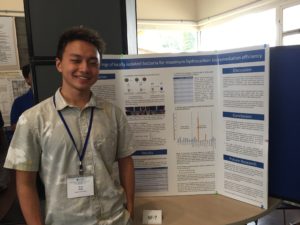
Rat Lungworm disease (angiostrongyliasis), caused by human infection of Behavioral & Social Angiostrongylus cantonensis, is a dilemma plagues inhabitants of tropical climates Sciences globally. The lifecycle of rat lungworm usually is limited to rats and slugs/snails, however Biochemistry humans may be incidental hosts if they ingest the larvae or slime via raw or Biomedical & Health undercooked vegetables. Once humans are infected, the larvae invade the brain and Sciences often cause serious neurologic symptoms. As rat lungworm infections become more Biomedical prevalent, there is growing incentive for developing an effective method to both treat Engineering angiostrongyliasis and develop a vegetable wash to help prevent human infections. This cellular secular experiment analyzed the effectiveness of fluorescent staining as a death assay for A. cantonensis. The cell-permeant fluorescent molecule Propidium iodide was investigated chemistry as a stain that would only penetrate the surface membrane of dead larvae, and the fluorescent molecule Hoechst was investigated as a stain that would penetrate the & surface of live and dead larvae. Images of fluorescence were collected from the Bioinformatics Operetta, a high-Content imaging system, and were then processed in Earth & Environmental analysis Software. Total fluorescence area and fluorescence intensity data was Collected Sciences by setting threshold ranges for pixels. As hypothesized, Propidium iodide only stained Embedded Systems dead larvae, and Hoechst stained live and dead larvae. Therefore, fluorescence staining death assays using Propidium iodide and Hoechst is effective, and can be used to determine the success of killing larvae with household washes.
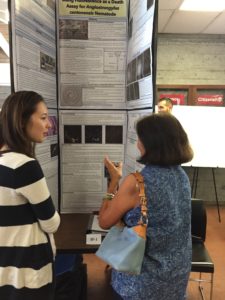
The purpose of this study was to model the effect that Rapid ‘Ōhi‘a Death has on photosynthetic processes by comparing the carbon dioxide fixation rates of leaves from healthy, diseased, and wounded ‘ōhi‘a seedlings over time. Furthermore, the goal was to use these findings to better understand how Rapid ‘Ōhi‘a Death (ROD) affects Hawaii’s carbon cycle and ties into overall global climate change. It was hypothesized that when the carbon dioxide fixation rates of leaves from healthy, diseased, and wounded ‘ōhi‘a seedlings were compared over time, the leaves from the healthy seedlings would show no change in photosynthetic rate over time, the leaves from the wounded seedlings would show a slight decrease in photosynthetic activity initially due to the wound and would then normalize as the wound heals, and the leaves from the diseased seedling would show a decrease in the rate of photosynthetic activity as the disease progresses over time. The results showed that the leaves from the healthy ‘ōhi‘a seedlings showed no change in photosynthetic activity over time, and the leaves from the diseased seedlings showed a decrease in photosynthetic activity by two and a half weeks after inoculation; this was consistent with the hypothesis. The wounded seedlings did not show an initial decrease in photosynthetic activity as was expected due to the wound, but were as consistent as the leaves of the healthy seedlings; this showed that any change in photosynthetic activity was due to the actual disease and not the wound. More experimentation is needed in order to relate these findings to Hawai‘i’s carbon cycle and to overall global climate change. However, no previous studies have investigated the effect that the ROD disease has on photosynthesis rates within ‘ōhi‘a trees; therefore, this study serves as a preliminary to gaining further understanding of how the natural chemical processes of ‘ōhi‘a trees are affected by the ROD disease.
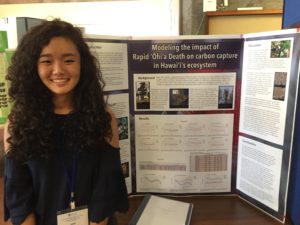
This project was a continuation from last year’s project which tested salinity on Pula’a (Micronesian) and Pa’akai (Hawaiian) taro plants using tissue culture. This year, I tested taro in greenhouses. The purpose of my experiment was to find a salt tolerant taro, to help the Micronesians, whose staple food is being damaged from salt water flooding. Plants were exposed to different concentrations of saltwater solutions. The first trial tested Hawaiian taro, Pa’akai, Mana Ulu and Lehua to find the most salt tolerant plant. The most salt tolerant was Pa’akai. A second trial tested Pa’akai and Pula’a in 25% saltwater with calcium. The Pula’a grew better and the calcium helped the plants exposed to salt recover. The third trial used 50% and 75% saltwater with fertilizer replacing calcium. The Pula’a grew better with salt and fertilizer. A fourth trial tested plants at 75% again to collect samples of tissue to analyze for salt content. The data showed the Pula’a stores salt in the petiole possibly making it salt tolerant. The fifth trial used 10% saltwater. The Pula’a grew better with the saltwater. The data from all trials supported the hypothesis that the Pula’a is more salt tolerant than the Pa’akai. The data also showed that calcium and fertilizer can help plants recover, although not to the same levels as untreated plants.

The purpose of this project is to study the growth of Lycosidae Wolf Spiders found on Mauna Kea at average temperatures of 25°C and 21.6°C. The hypothesis was that these spiders would grow faster and become larger after each molt in a temperature of 25°C. For this experiment, each spider was placed into a small plastic container. They were fed three times a week, supplied with a water source and their containers would be cleaned. It was then noted if the spiders were alive or dead and if they molted. A microscope and camera was set up to take pictures of the faces of the spider molts, and also of the deceased spider’s faces. Then, using a computer measuring program, the closest distance between the two largest eyes were measured in millimeters to track growth rate. The spiders grew faster in the warmer temperature. Although there were two instances where the molt sizes at 25°C were smaller than those at 21.6°C, this species thrived in the warmer temperature, molting more often. 12.5% of the spiders at 25°C survived the 105 day experiment while 6.9% of the spiders at 21.6°C survived.
